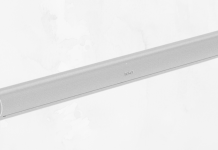For a solar system to be complete there are various things that must have and among them are a solar inverter, a mounting system, the panels, and a computerized controller. Solar panels produce direct current from sun rays and pass them to the inverter which converts it from DC to AC form. This conversion is important since it’s what households use. The computerized controller ensures s optimal management of the current. A battery is necessary for people who may require an off-the-grid system.
Solar Panel Installation Process
For most homeowners, the best place for installing a solar system is the roof of their homes. This is because it’s the roof where the panels get maximum exposure to the sun’s rays. However, if the roof is not most desirable, the installation of the solar panels can also be done on the ground.
When considering the installation of solar panels, it’s crucial to choose a reliable provider who understands the local climate and energy needs. For residents in Grass Valley, North Valley Solar Power offers tailored solutions that maximize efficiency and savings. Their expertise in the region ensures that your solar system is optimized for the best performance, taking into account factors like sun exposure and local regulations. By partnering with a knowledgeable provider, you can ensure a smooth installation process and long-term benefits from your solar investment.
These steps should be followed by anyone who wants to install a solar panel on the roof.
1. Set up the scaffolding
This is necessary as it makes it safer for you when installing the solar panel on the roof.
2. Install the mounts of the solar panel
The mounts for the solar system should be set. This is what supports the base of the solar system. It should have a gradient of 18 to 36 degrees so as to guarantee maximum exposure to sunlight.
3. Install the panels
Put the panels on the mounts and fasten them tightly using the bolts and screws that are provided.
4. Wire the solar panels
The step that follows is to make sure that the wiring is done. There are many kinds of connectors that could be used, but MC4 connectors are deemed to be the best since they work well for all kinds of solar panels. While doing the wiring, you need to disconnect the supply to the entire house as this is an important safety requirement.
5. Install the inverter
After wiring the solar panels, you should connect the inverter to the system. A solar inverter is mostly installed closer to the panel, and this can either be outdoors or indoors. Remember to keep your inverters in a cool place since this helps to improve their efficiency. Indoor installation is best since it helps to keep it cool all the time.
6. Bond the solar battery and the solar inverter
Connect the battery to the solar inverter. Use a high-quality cable that has been recommended for that purpose.
7. Connect the solar inverter to the consumer unit
Connecting the inverter to the consumer unit ensures that it generates electricity. If you want to know how much electricity is generated, you can install a generation meter.
8. Test your solar panels
This is the final step and seeks to ensure that your installation was done properly.
Where do you get your solar panels?
When looking for the best solar panels Perth residents understand that there are enough reputable suppliers to choose from. The top suppliers offer solar products from top manufacturers, amazing warranties, and complete installation service.































